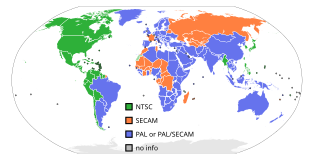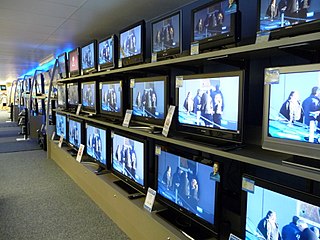| Name | Details |
|---|
| Nipkow 1884 | 24 lines. Patent granted but Nipkow did not build a system. |
| WGY, 2XAF, 2XAD | 24 lines, 21 frame/s, progressive scan |
| United Kingdom, 1926 (Baird) | 30 lines, 5 frame/s, black-and-white experimental transmissions |
| United Kingdom, 1928 (Baird) | 30 lines, 5 frame/s, first experimental colour TV transmissions [1] |
| W3XK, Washington, D.C, 1928 | 48 lines. Oldest television station in the United States. [2] |
| 2XAL, WRNY "Radio News", New York, 1928 | 48 lines, 7.5 frame/s, progressive scan. Second to broadcast television pictures to the general public, after W3XK in Washington, D.C., [3] [4] [5] [6] [7] [8] |
| Baird, United Kingdom, 1928–32 | 30 lines, 12.5 frame/s, 3:7 vertical aspect ratio, vertical progressive scan, ~70x30 pixels per frame, sound, live TV from studio, first outdoor remote broadcasts of the Derby [9] |
| W9XAA/WCFL, W9XAO/WIBO, W9XAP/WMAQ (Western Television / Sanabria), Chicago, 1928–33 | 45 lines, 15 frame/s, 1:1 aspect ratio, triple interlace scan. Live TV from studio. (Above transmissions: Picture station / sound station) [10] |
| W9XK/WSUI, Iowa City, Iowa (Used Western Television/Sanabria system), 1933–39 | 45 lines, 15 frame/s, 1:1 aspect ratio, triple interlace scan. Includes sound on WSUI. Educational TV pioneer. Live TV from studio. [10] |
| Germany, France, 1930 | 30 lines, 12.5 frame/s, 3:4 aspect ratio, horizontal progressive scan |
| New York City, Schenectady, Boston, 1930–31 | 48 lines, 15 frame/s, 6:5 aspect ratio, horizontal progressive scan |
| W6XAO Los Angeles, 1931 | 80 lines, 20 frame/s, progressive scan |
| W6XAH Bakersfield, 1931 | 96 lines, 20 frame/s, progressive scan |
| New York, Schenectady, Boston, 1932 | 60 lines, 20 frame/s, 6:5 aspect ratio, horizontal progressive scan |
| Berlin 1932 | 30 lines, 12.5 frame/s, 4:3 horizontal aspect ratio, ~40x30 pixels per frame, test movies and live images |
| Königs Wusterhausen 1932 | 39 lines, 12.5 frame/s, 4:3 horizontal aspect ratio, ~31x30 pixels per frame, movies |
| Doberitz 1932 | 48 lines, 25 frame/s, 4:3 horizontal aspect ratio, ~64x48 pixels per frame, sound, talking movies |
| Berlin R.P.Z. 1932 | 60 lines, 25 frame/s, 4:3 horizontal aspect ratio, ~83x60 pixels per frame, test movies and live images |
| Italy 1932 | 60 lines, 20 frame/s, 4:3 horizontal aspect ratio, ~45x60 pixels per frame, test movies and live images |
| France 1932 | 60 lines, 12.5 frame/s, 3:7 vertical aspect ratio, vertical scanning ~35x60 pixels per frame, sound, live images [11] |
| Switzerland 1932 | 30 lines, 16.6 frame/s, 4:3 horizontal aspect ratio, ~40x30 pixels per frame, test movies and live images |
| USSR 1932 | 30 lines, 12 frame/s |
| Belgium 1932 | 30 lines, 12.5 & 16.6 frame/s, 4:3 horizontal aspect ratio, ~40x30 pixels per frame, sound, talking movies |












